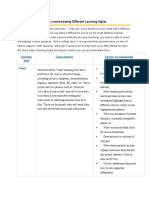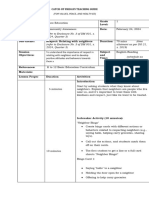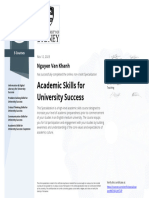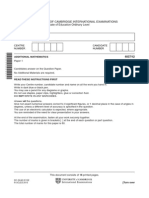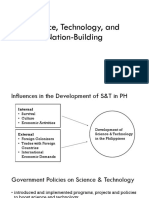Upon completing the questionnaire, I have discovered that I fall into the categories of
visual, applied, spatial, social, and pragmatic learning. A visual learner is one whose strengths
are visual modes of learning. These include but are not limited to reading, studying pictures,
reading diagrams, and analyzing graphs. An applied learner is one who prefers real objects and
situations. These learners prefer practical, real-life examples. A spatial learner is one who is able
to visually or mentally understand how certain things work. These learners are usually good at
drawing, assembling, and repairing things. A social learner prefers to work with classmates and
instructors. These learners enjoy interaction with other people. Finally, a pragmatic learner is one
who is practical, logical, and systematic. These learners enjoy following a set of directions or a
guide when they complete a task.
Knowing any student's learning style can be crucial to how you run your classroom. If
you see that your students are not doing well on assignments, there may be a problem with your
instruction, not the students ability. This is also very important with ELL students as many of
them do not speak English as their first language. ELL students entering a new school
environment can be frustrated and uncomfortable as they know they will struggle to learn
material presented in English. As we learned from our presentation and our effective visuals
assignment, showing students pictures, using sign language, and implementing other ways of
communication are critical to that students success. If you are aware of your students learning
styles, you can implement them in the classroom For example, if half your students are visual
learners while the other half are auditory learners, you can explain the topic first and then
implement visuals and videos to help the remaining students comprehend the material easier.
Knowing your students' learning styles can be used as an advantage to the teacher as they do not
have to spend as much time reteaching material or making extra worksheets to help the student
�understand the second time as opposed to the first time. If your ELL student is struggling with
group work because they identify themselves as an independent learner, you can make
adjustments to have them complete the assignment individually if they so choose. Leaving
multiple options on how to complete an assignment is crucial for student success.
For a visual learner, I would highlight important parts on directions and powerpoint
presentations. This allows for the student to understand exactly what is asked of them. I would
also include effective visuals around the classroom and during instruction as well as
implementing different graphs and diagrams. For an applied learner, I would include real life
examples to help the student better understand the assignment. For example, if my students were
learning about climate change, I would offer real data and statistics to help the student better
understand. I would also connect the topic to related topics to give students different examples. If
I had spatial learners in my classroom, I would allow them to draw different diagrams that would
help them better understand the topic. I would also opt for hands-on projects and examples in the
classroom. For social learners, I would allow the students to work in groups and collaborate on
assignments if they chose to do so. I would also allow time for partner and group discussion. For
pragmatic students, I would distribute a specific set of instructions on how to complete an
assignment. If it were to be an in class assignment, I would clearly state the directions on the
board so that the students had an exact idea on how to complete the assignment. While there are
many different strategies that teachers can implement into the classroom, I would ultimately
leave the desired strategy up to the student. I would implement a questionnaire in the beginning
of the school year for students to recognize what kind of learner they are individually so they can
use it to their advantage later in the school year.















































